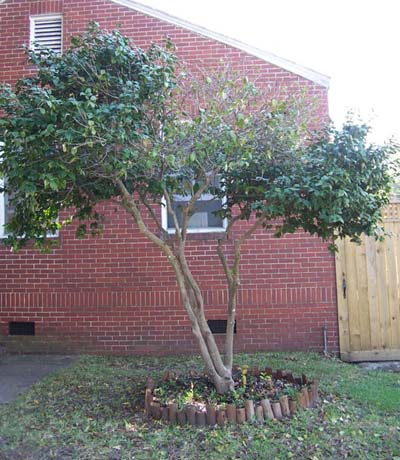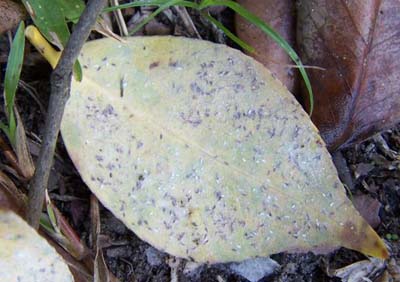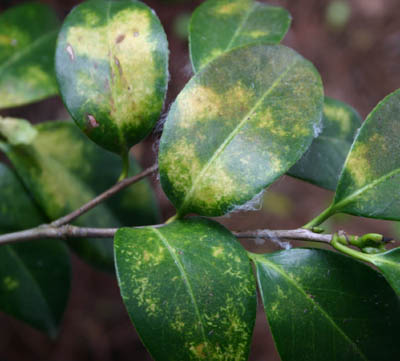





Q: I have a camellia tree in front of my house in Savannah that is just gorgeous. But it’s dying!! A few months ago I noticed dense, very sticky webs strung along the low branches of the tree. The webs do not billow out, rather they’re very close to the branches, like a “web sweater” if you will. Inside of them are dark colored bugs.
Now, almost overnight it seems, a huge swath of the tree has lost its leaves and is dying. I cannot bear to lose this tree!
A: You have two insects present. First, barklice have covered the stems and bark with protective webbing. Barklice are harmless to the plant. They feed on debris found in the cracks and crevices of the bark.
A second insect is causing the massive leaf drop: tea scale. These sucking insects get their name from the fact that tea is made from one species of camellia. The scale insects attach themselves to the underside of leaves and suck cell juice, leading to a mottled appearance on the upper side.
The key to controlling tea scale is to spray the backside of all of your camellia leaves thoroughly with horticultural oil (click for sources) or neem (click for sources)
. Spray the stems and trunk as well.
You may not be familiar with horticultural oil, though it has been used for decades. Just as the name says, it is a highly refined oil which has been tested for safety on plants. It works by suffocating the insects it coats. Years ago, the only time to use oil was during the late winter or early spring when the humidity is low. Otherwise the oil would harm plant leaves as well as the insects it was intended for. Over the last few years horticultural oils have become more pure, so they can be used in summer or winter.
See also Barklice



Copyright © www.100flowers.win Botanic Garden All Rights Reserved